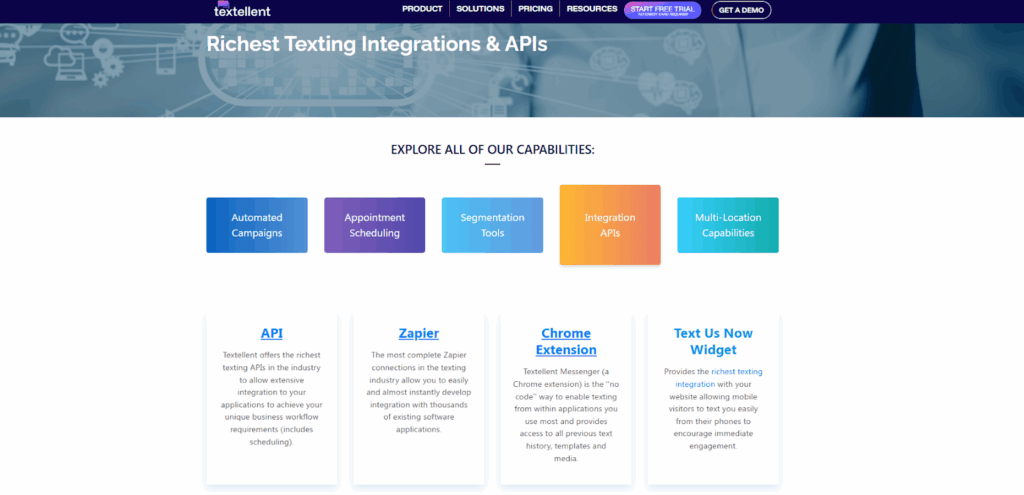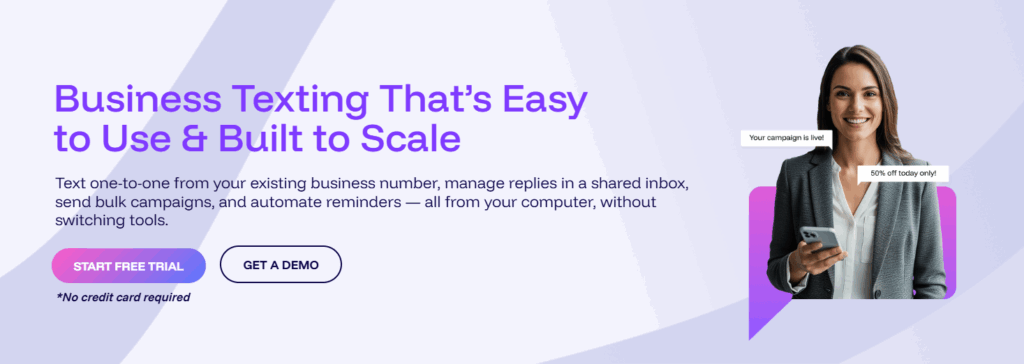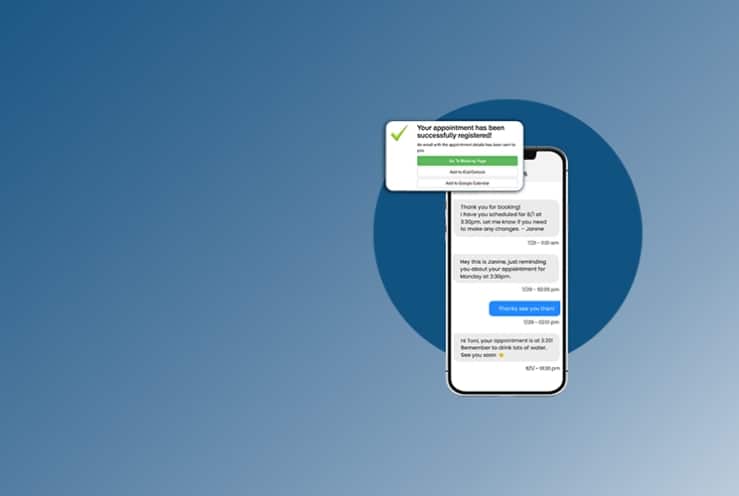
How a CRM SMS Integration Brings You Closer to Customers
Many businesses still rely on calls and email alone. But that could lead to scattered messages, customer details living in different apps, and your team spending too much time trying to catch up.
The real power shows up when your texting tool and CRM work together instead of sitting in separate places.
A customer relationship management (CRM) system with text messaging allows every text to stay tied to the correct record, and replies appear in real time without managing extra apps.
In this article, we will explain how CRM and SMS can work together, the key benefits of integrating them, and how you can set them up to create a smoother experience for your team and your customers.
How CRM Systems and SMS Tools Work Together
A customer relationship management system already holds key details from customer data, deals, tasks, and past notes.
When you’re integrating SMS into your CRM, it can pull in and send out SMS messages without forcing your team to jump to another screen.
But first, you need to add automated texting software to your CRM platform to open the door for text messaging capabilities inside the same dashboard.
Once linked, both systems can share numbers, names, tags, and updates. The setup gives you the structure needed to support the sales process without slowing your staff down.
The CRM can trigger texts based on steps in your pipeline. For example, a new lead can get a short note, or a service ticket can get a follow-up when it moves to the next step.
All the info stays inside your CRM, which keeps your team on track and gives a steady view of progress that supports customer satisfaction.
Many marketing teams work inside a CRM system all day, so having SMS tied in lets them handle outreach without losing time. They can check phone numbers, send quick alerts, pull past notes, and help customers move forward.
Why SMS Marketing Matters for Customer Contact
Customers read texts fast and reply sooner than they do with email or calls. They also carry mobile devices everywhere.
That’s why texting’s steady reach gives teams more chances to guide buyers. It also helps support groups solve problems before they grow.
SMS marketing also lines up well with the need for simple talks. Customers prefer it because the message is easy to read and does not demand a long reply.
Another strong point is how SMS fits into a mix of communication channels. Calls are helpful for longer talks, and email works for detailed info, but texts fill the space between the two.
If someone books a service, a team can send quick appointment reminders. If a lead fills out a form, a sales rep can send a short thanks. These simple touches can boost engagement because they feel natural.
With more teams sending messages through their CRM, SMS has become a steady tool for support, sales, and booking groups. It fills gaps that email and calls tend to miss and keeps customers close to the next step.
How to Set Up a CRM SMS Integration
Setting up a CRM SMS integration starts with choosing a system that fits your daily work, then linking it with a texting tool that can handle steady updates.
With the right setup, your staff can move through each day with far more clarity and stronger customer engagement.
Step #1: Choose the Right CRM
Start by picking a tool that supports customer relationship management and steady day-to-day work.
It should handle clean CRM data, store all contacts in clear order, and support smooth CRM integrations so your tools work seamlessly.
Many groups look for a user-friendly CRM that fits their daily tasks and lines up with their tech stack, while others switch to a new CRM that offers more room to grow.
The goal is to pick a base that helps you stay on the same page and gives you space to grow lead generation across your marketing efforts.
Step #2: Select the Best SMS Software
Choosing the right SMS provider is one of the most important parts of building a strong texting setup inside your CRM.
You want more than simple sending power. You need a tool that connects smoothly with your CRM software and gives your team steady control over every step of your outreach. This is where Textellent stands out as the best choice.
This text messaging platform links tightly with major CRMs, syncing CRM contacts, tags, notes, and message logs without extra work from your team. Textellent offers one-click integrations with many CRMs, like HubSpot so that you can get started easily.

Every text sent or received is recorded inside the customer timeline, which helps staff stay on the same page and keeps all customer interactions tied to the right moments. You can also text directly from within your CRM using Textellent Messenger.
It also supports event-based triggers, so your CRM can send personalized text messages when new leads arrive, deals shift stages, or bookings are made.
Beyond links and syncing, Textellent brings strong SMS functionality that fits both small and large teams. It can support bulk messages, two-way talks, shared inboxes, message templates, and strong tools to manage text messages across busy days.
You can use it for reminders, service alerts, or short pushes inside your SMS marketing plan. It can also support SMS campaigns, drip flows, and touchpoints that help nurture customer relationships.
If you want a texting tool that keeps your team in sync and makes daily work easier, Textellent is ready to help. Sign up for a free trial or request a demo consultation today!
Step #3: Configure API Keys and Authentication
Once you’ve chosen your CRM and SMS software, the next step is linking them so both sides can talk to each other.
This link is what makes your SMS CRM integration work, because it lets the CRM pass contact data, tags, and updates to the texting tool while bringing replies and logs back into the record.
To set this up, you’ll enter the API keys from your SMS provider into your CRM software, which allows both platforms to share data and move notes in real time, or use Textellent’s one-click integrations.
The setup also supports smooth integrations, which provide your team with the path they need to handle outreach inside one platform. Once the keys are added, your CRM can send alerts, store replies, and guide your automated workflows.
Step #4: Set Up Message Templates
SMS templates provide your team with a simple way to send text messages without rewriting the same lines over and over. These templates help you shape personalized messages that feel natural while keeping tone and pacing the same across your staff.
With the right setup, you can build short layouts for reminders, thank-you notes, service updates, or steps inside your marketing campaigns.
These templates also support smooth customer communication, since each sales text message keeps a friendly flow while still matching the purpose of the outreach.
Step #5: Create Automated Workflows
With automated workflows, your system can send SMS campaigns, apply tags, or update fields the moment a contact takes action. This might include a new lead entering the pipeline, a form being filled out, or a booking being confirmed.
These flows make it easier to guide people with personalized messaging, quick alerts, or soft reminders that fit their stage in the process. They also help sales teams run smooth pushes, trigger follow-ups, and improve campaign effectiveness.
Automating small steps also clears space for your team by reducing repetitive tasks. Instead of spending time typing the same lines or checking the same details, staff can focus on deeper talks that help nurture relationships.
Step #6: Test and Troubleshoot
Before going live, it’s important to run small checks to confirm that every part of the setup works the way you expect.
Start by sending a few sample notes to make sure they reach the right record and show up in the timeline without delays. It helps you confirm that both systems are talking to each other and that replies move back into your workspace without missing details.
As you test, you need to watch how each step flows. Check if you’re sending the SMS at the best time, if they appear in the correct place, and if updates follow the path you set earlier.
This stage also gives you room to check scheduled messages, review campaign performance, and study valuable insights from early replies so your setup becomes steadier.
Small issues can happen during early setup, like missed records or timing gaps. This stage gives you a space to fix problems before customers see them.
Make Texting a Natural Part of Your CRM—Try Textellent!
Many teams struggle with missed replies, slow follow-ups, and customer talks spread across too many tools. When texts sit in one place, and your CRM sits in another, it’s easy for details to slip away and weaken the customer experience.
Textellent links texting and CRM activities in one smooth setup. Your staff can handle replies and track every step without jumping between screens.
Each text lands in the right record to give your team a view of past text conversations and next steps, which helps you stay connected to customers directly at the right moment.
Textellent fits into daily tasks with an intuitive layout, steady tools, and simple steps that help your team stay connected and move faster.

Sign up for a free trial or request a demo consultation today and see how automated text messaging promotes stronger results and more revenue!
FAQs About CRM SMS Integration
What is CRM SMS?
CRM SMS is the link between a CRM and a texting tool that lets teams send and receive texts in the same place where they store contact details, notes, tasks, and past calls.
It helps teams reach people fast, track every exchange, and keep all info tied to the correct record. This setup adds strong SMS capabilities that support smoother workflows and faster updates.
What is the best CRM for texting?
The best choice depends on your daily needs, team size, and budget. Some businesses prefer simple layouts, while others need comprehensive tracking or more fields.
CRMs such as HubSpot, Zoho, Salesforce, and Pipedrive offer built-in or add-on texting tools. But the “best” one is the one that fits your workflow and connects with the texting platform you plan to use.
What are the four types of CRM?
CRMs generally fall into four broad groups:
- Operational CRM – Helps with sales, service, and simple day-to-day tasks
- Analytical CRM – Focuses on studying data and patterns
- Collaborative CRM – Helps teams share details across departments with more seamless communication
- Strategic CRM – Supports long-term planning for relationships and growth
Each type can help teams improve structure, support better streamlined communication, and keep contact history in one place.
Does Salesforce do SMS?
Yes. Salesforce can send texts through add-ons or third-party tools. These tools help teams send quick notes, track replies, and keep all talks tied to the right records inside the system. Textellent also offers deep links for texting inside Salesforce.





